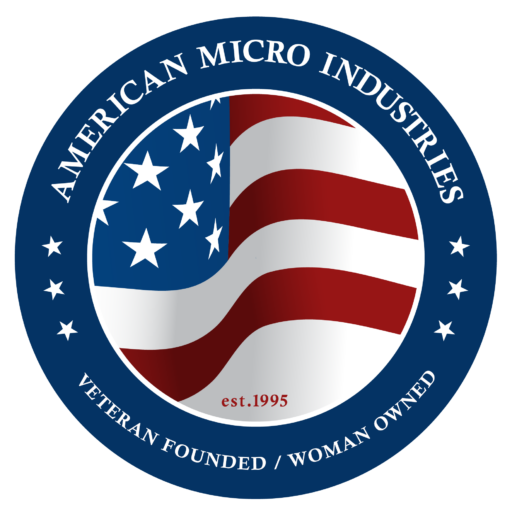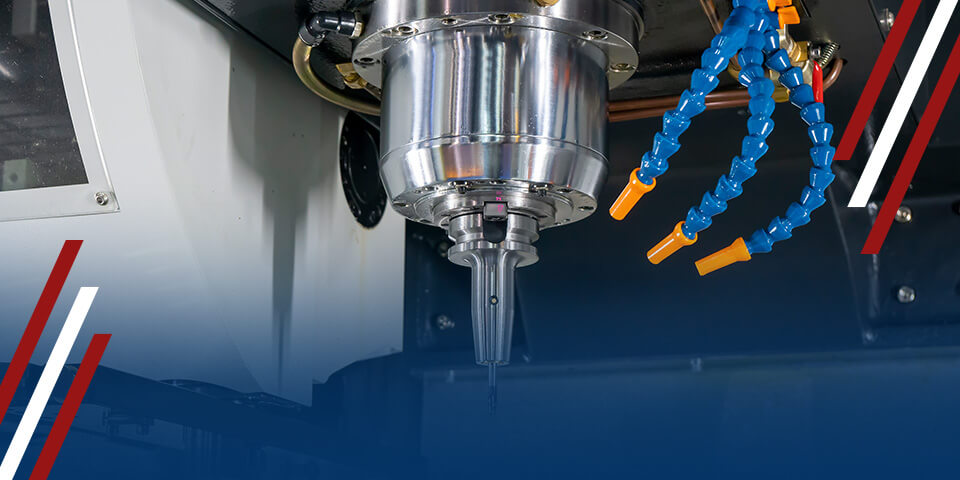

Engineers and project managers rely on advanced machining techniques to meet complex part production demands. Multi-axis CNC machining has revolutionized the manufacturing industry, offering numerous advantages over traditional methods. Unlike traditional CNC machining, which is limited to three axes, multi-axis machining introduces rotational axes, enabling the creation of intricate features and complex geometries that were previously challenging — or impossible. This expanded capability opens up new possibilities in modern manufacturing.
While traditional CNC machining has been a longstanding method in manufacturing, it is constrained by its limitation to three linear axes — the X, Y and Z planes. This means that the cutting tool can move solely along these axes to shape the desired part. Therefore, traditional CNC machining sometimes proves inadequate for intricate features or complex shapes.
Multi-axis CNC machining expands the capabilities of CNC machining by introducing additional rotational axes. This breakthrough creates possibilities for fabricating complex geometries, curved surfaces, undercuts and other intricate features. These were once considered arduous or even unattainable using traditional methods. With multi-axis CNC machining, manufacturers can now achieve heightened precision and produce parts with unparalleled intricacy.
Multi-axis CNC machining encompasses a range of configurations, including 3-axis, 4-axis, 5-axis and beyond. Each configuration offers unique advantages and is suited to specific applications.
CNC machining offers many advantages over traditional methods, catering to the increasing demands for greater precision, efficiency and design complexity due to its ability to simultaneously move along multiple axes.
By incorporating multiple axes of movement, high-precision multi-axis CNC machining techniques allow for more complex and intricate operations. The simultaneous movement along different axes enables the cutting tool to approach the part from various angles, resulting in greater accuracy and precision.
Furthermore, multi-axis CNC machining eliminates the need for multiple setups and part repositioning. The elimination of manual repositioning also ensures consistent part quality and dimensional accuracy throughout the production process.
Manufacturers can reduce cycle times and perform multiple machining operations simultaneously with multi-axis CNC machining, maximizing their productivity. Instead of removing and repositioning the part for subsequent operations, multi-axis machines can access multiple sides and angles without interruption. This streamlines the machining process, reduces idle time and maximizes the utilization of the machine.
As another factor that makes it so efficient, multi-axis CNC machining minimizes the need for manual intervention. Once the initial setup is complete, the machine can autonomously execute complex operations, reducing the reliance on human operators.
The versatility of multi-axis CNC machining for complex parts makes it much easier to produce intricate designs. This capability allows for the creation of precise 3D shapes, contours and profiles that would be challenging or impossible to achieve with traditional machining methods.
Multi-axis CNC machining excels at machining undercuts and hard-to-reach areas. The simultaneous movement of the cutting tool along multiple axes enables it to reach challenging features and contours without the need for manual repositioning.
Another advantage of multi-axis CNC machining is the improved surface finish it offers. The smooth and continuous movement along multiple axes reduces the occurrence of machining marks and tool marks on the part. The enhanced surface quality achieved through multi-axis machining is particularly beneficial for parts that require attention to aesthetics or have functional requirements related to friction, wear or fluid dynamics.
Multi-axis CNC machining exhibits versatility and flexibility, making it suitable for various materials, part sizes and geometries. Multi-axis machines work well on many materials, including metals, plastics, composites or exotic substances. This adaptability allows manufacturers to explore new materials and push the boundaries of part design and performance.
Additionally, multi-axis CNC machines can accommodate parts of different sizes and complexities. From small, intricate components to large-scale structures, the flexibility of multi-axis machining enables the production of diverse parts without the need for significant reconfiguration or investment in specialized equipment.
Multi-axis CNC machining has found widespread application across various industries, revolutionizing manufacturers’ production of components and parts. From the aerospace and automotive sectors to medical device production and tool and die making, this advanced machining technique offers a range of advantages that cater to the unique needs of each industry. Let’s explore some applications where multi-axis CNC machining has proved invaluable.
The aerospace and aviation industries demand high precision, complex geometries and lightweight components. Multi-axis CNC machining manufactures aircraft parts, such as turbine blades, engine components, structural elements and intricate brackets.
In the automotive industry, multi-axis CNC machining is widely employed for producing engine components, transmission parts, chassis components and customized interiors. The technique allows for the efficient machining of complex shapes, contours and undercuts found in engine blocks, cylinder heads, crankshafts and other critical automotive parts.
The medical device industry relies heavily on multi-axis CNC machining to manufacture intricate and precise components. These machines produce customized medical devices with exceptional precision, including everything from orthopedic implants and surgical instruments to prosthetics and dental appliances. The ability to machine intricate features, tight tolerances and complex geometries ensures the quality, reliability and functionality required in the medical field.
Manufacturers use multi-axis machines to produce molds, dies and tooling components for various industries, including automotive, aerospace and consumer goods. The versatility and flexibility of multi-axis machining enable the creation of complex cavity geometries, sharp corners and undercuts, ensuring the accuracy and durability of the tooling used in production processes.
Multi-axis CNC machining allows for quick turnaround times, low-volume production runs and the creation of functional prototypes. The ability to rapidly produce complex shapes, fine details and varied geometries makes multi-axis CNC machining ideal for iterative design processes and accelerated product development cycles.
Beyond specific industries, multi-axis CNC machining caters to a broad range of applications requiring customized and intricate components. From jewelry and electronics to architectural elements and artistic pieces, the precision and flexibility of multi-axis machining empower manufacturers to meet the demands of diverse markets.
Since 1995, the Custom Components division at American Micro Industries has been at the forefront of innovation, catering to the unique needs of aerospace, defense, electronic, marine, military, medical OEM and contract manufacturing industries.
We understand the importance of precision and the demand for high-quality custom products. Our focus on delivering exceptional quality has made us a longstanding partner to customers with special technical, regulatory or mechanical requirements. With a complete manufacturing facility and a dedication to meeting drawing specifications, American Micro Industries is equipped to handle any custom machining project.
With our dedication to excellence and extensive range of services, we are poised to deliver the particular parts you need tailored to your specifications. Learn more about our CNC machining capabilities or connect with our team to discuss your needs and get a free quote.